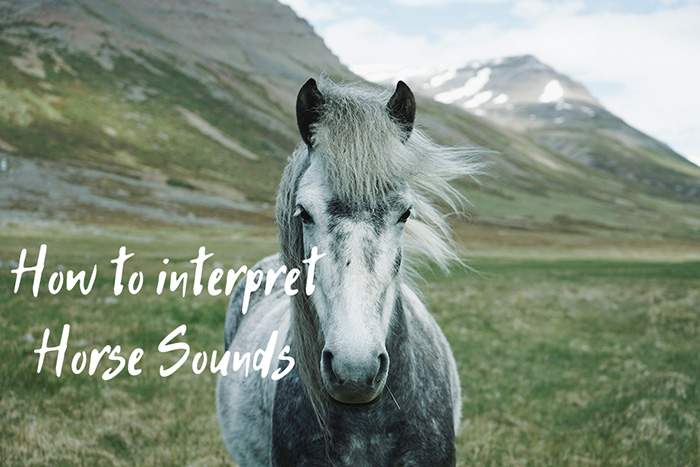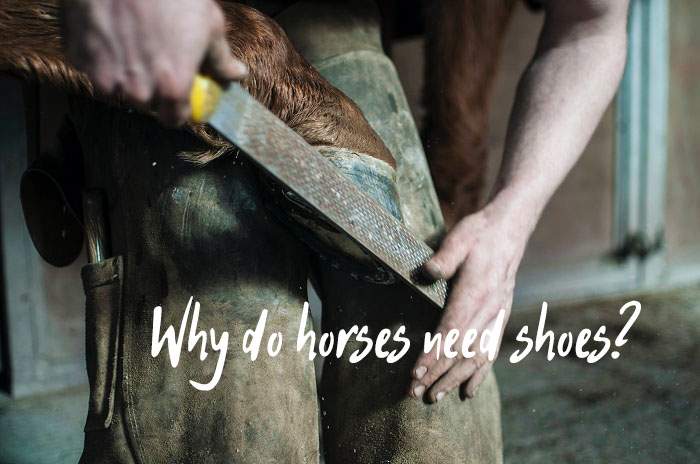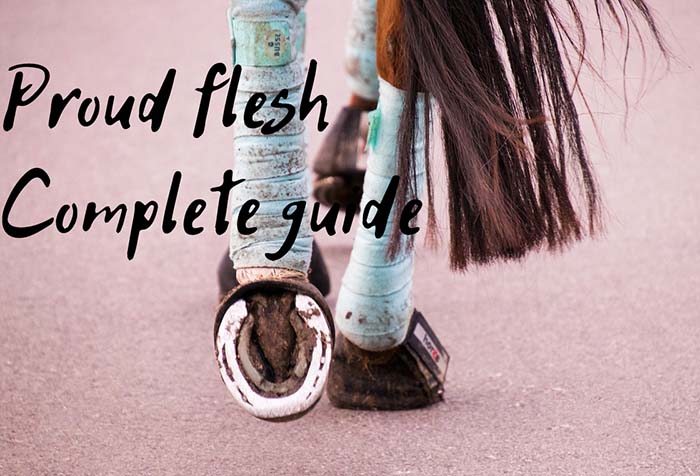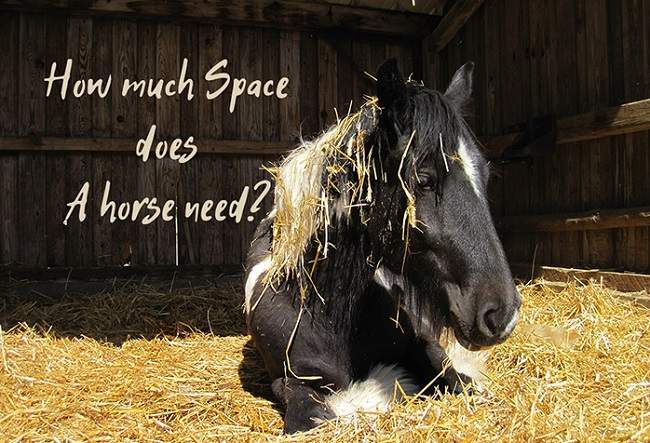How to Interpret Horse Sounds and Identify Their Meaning

Horses are not the most vocal animals, but they do use sounds in order to communicate with humans and with each other. When it comes to vocalization, there are four primary sounds that a horse will produce, namely a neigh or whinny, a nicker, a squeal, and a snort.
It’s very important to pay close attention to a horse’s vocalization in order to be able to understand what it feels at the time, or what it’s trying to express with the help of its voice. In a herd, horses rely on alternate means of communication, particularly through body language. They can also kick, bite, and nudge each other, often as a way to assert dominance.
Apart from the four main horse sounds that I mentioned above, your equine friend might also offer a sigh, a groan, or a grunt from time to time. In this article, I’m going to explain each different sound that your horse might make, and I’ll give you some pointers on how to interpret them depending on the situation.
On the way, you’ll also learn how to interpret a horse’s body language, as horse vocalization is often accompanied by obvious “tells” that might aid you in handling the situation in a correct way.
The Neigh.
The neigh is probably the most well-known and important sound your horse will ever make. That’s because a horse’s neigh can express either confidence or anxiety. There are two types of neighs, then, so let’s see exactly how to distinguish the good from the bad.
If your horse is neighing because of a sudden change in its routine, such as finding itself alone in the stable, or maybe in a completely new environment altogether, chances are it’s feeling anxious.
An anxious neigh will be accompanied by rapid pacing, profuse sweating, or rapid up and down movements of the tail. An anxious horse will offer a high-pitched neigh, and it might lie down in an attempt to make itself look smaller. The ears will also go back and forth.
Your horse is probably a bit frightened, or it’s having difficulty adjusting to a new situation. You’ll need to handle it with care.
On the other hand, a confident neigh is accompanied by forward-facing ears, a lifted tail, and a daring look. The sound of this neigh is also deeper and more confident. Once you spend enough time with your horse, you’ll learn to differentiate between the two types, If you just got your horse, pay close attention to its body language for a few weeks.
All that being said, the most important thing you need to remember is that a horse will neigh only when it has a good reason to. It’s feeling something, either good or bad, and it’s up to you to determine what and how to take action if needed.
The nicker.
When a horse nickers, it does engage its vocal cords but it keeps its mouth shut thus creating a soft, almost welcoming sound. I love to hear my horses nicker as I approach them because it sounds like they’re greeting me. As it turns out, a nicker does usually signify a friendly greeting.
As for body language, the horse might also raise its head and point its ears in your direction as you approach. It is most likely to make this sound just before feeding time, as it associates your arrival with feeding. Stallions also nicker in order to provide courtship to mares, and in turn, mares often nicker softly to their foals in order to call them over.
In certain cases, however, the horse might nicker when it’s feeling threatened or cornered. Just like before, if it is pacing, or if it’s flicking its ears back and forth while nickering, it’s probably feeling anxious or fearful. In this case, identify the stress factor and remove it, or remove the horse from that situation.
Treat it with kindness for a few minutes and it should be okay from there on out.
The squeal.
With squealing, you’ll most often hear it from worried mares or stallions that are already in a “fight or flight” stance. This is a sudden exhalation of air through the nose, and you should really train your ear to detect it early.
With mares, they can squeal when they’re being courted, or when they’re being challenged. This horse sound is often interpreted as aggression, which is why you need to quickly find the source of irritation and try to calm the herd as best as you can. Sometimes, horses can squeal right before they try to bite, so definitely keep an ear out for that!
With stallions, they squeal when they are particularly worried or challenged. It’s usually easier to identify their problem because it often has something to do with another horse.
The Snort.
During a snort, your horse will inhale quickly then puff the breath out through its nose. The sound that is produced almost sounds like a short purr. It usually signifies excitement, and it happens right before an activity that your horse is looking forward to.
If you notice your horse snorting at roughly the same time before its walks or training sessions, it means that it anticipates what it’s about to happen and it’s looking forward to it. One thing to keep in mind is that a snorting horse will cause other nearby horses to become excited as well.
As you lead your horse out of the barn or pen, pay close attention to its body language. If it keeps its head high and its tail lifted as you lead him out, you should be ready for any sudden movement. It might become a bit too excited for its own good and it might decide to bolt on you. A good way to prevent this from happening is to lead him in circles a few times before taking it out. This way, the horse will know that you’re still the one in charge.
Groaning.
As with us humans, a groan could signify pain or discomfort. That’s not always the case, though, so make sure to identify exactly when is your horse groaning. What is it doing at the time? If it groans right before it jumps over obstacles, it might just be a reflex sound, such as the ones we make right before we lift something.
However, if the horse groans when its hooves hit the ground after jumping, it might be a pain signal. If you didn’t raise the horse, it’s important to know what it’s been through before you got it. Check for any scars or abnormalities, and make sure to check the hooves regularly.
The groan might also come during defecation, but it’s not always a sign that something is wrong. Checking hydration levels is never a bad idea, as well as the horse’s heart rate. You can also listen for any unusual gut sounds, especially if the horse strains and the stool is very dry.
Your horse will give subtle tells if something is wrong with it, but it’s your job to pay attention to them and act accordingly if needed.
Sighing.
Horses sigh when they feel a sense of relief, or when they are particularly bored. The sound is similar to what humans would produce. They draw in a deep breath and release the air slowly through the nostrils or mouth.
A horse might sigh when you massage it or groom it, and in this case, it represents a feeling of relief. The horse’s muscles might relax while it’s sighing, which is a clear sign that it’s feeling better and it’s becoming more relaxed.
A horse might also sigh if it’s becoming bored with a repetitive exercise or routine. In this case, try to mix things up a bit and introduce new activities. Going for a trail ride is never a bad idea in this case.
Conclusion.

Horses are social animals. They like to be around other horses, and they have their own way of communicating with each other. When interacting with humans, they produce certain sounds that we can use to interpret their mood, their physical well being, or their desires.
I hope that my small guide has helped you achieve a better understanding of horse sounds and horse behavior. With this knowledge, you should be able to understand your horse better and thus become a better horse owner as a result.






